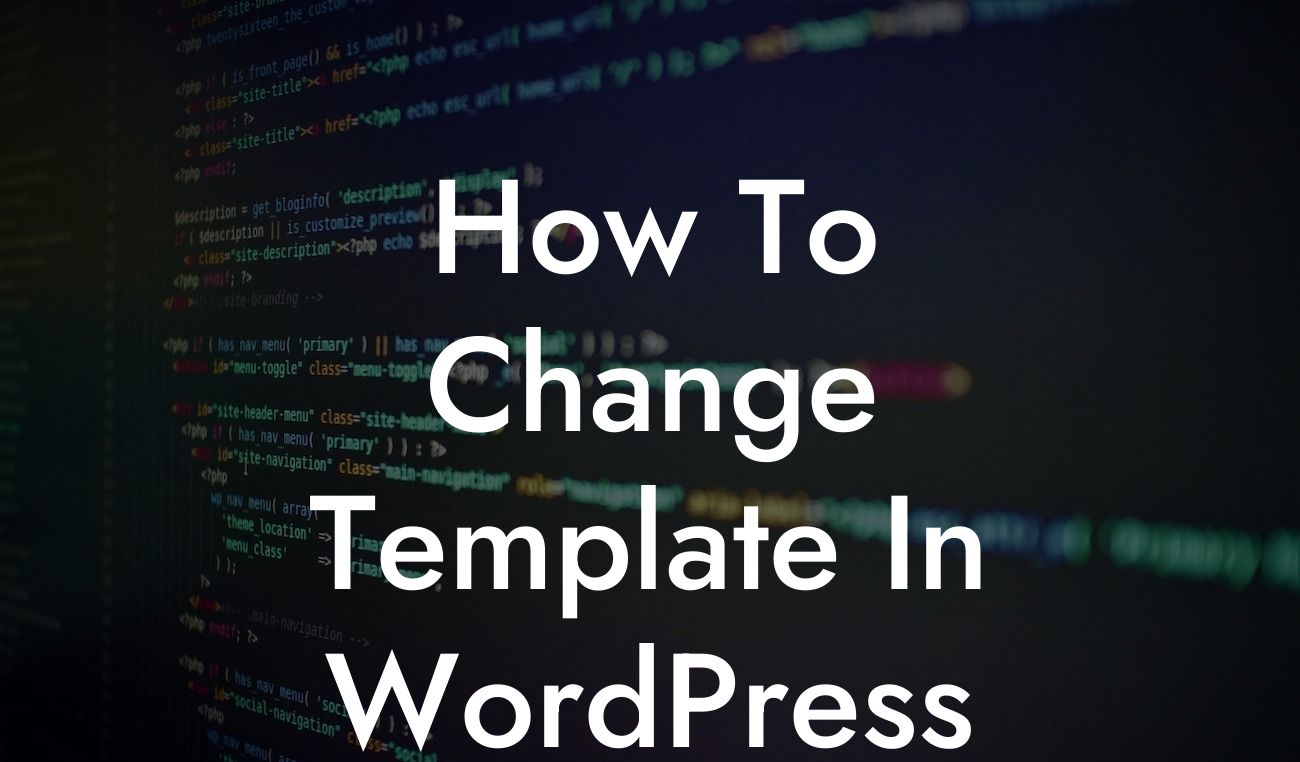Did you know that the appearance of your website plays a crucial role in attracting and retaining visitors? If you're a small business owner or an entrepreneur looking to enhance your online presence, finding the right template for your WordPress site is essential. In this article, we will guide you through the step-by-step process of changing templates in WordPress, helping you upgrade the design of your website and take it to the next level.
Changing the template of your WordPress website can seem like a daunting task, but fear not. Follow the steps below and you'll be able to give your website a fresh, new look without any hassle.
1. Research and Selecting the Perfect Template:
The first step in changing your template is to research and select the perfect one for your website. Take the time to explore different templates and consider your website's purpose, target audience, and branding. Look for templates that are compatible with your version of WordPress and offer customizable features that align with your needs.
2. Backup Your Website:
Looking For a Custom QuickBook Integration?
Before making any changes to your website, it's crucial to create a backup. This ensures that in case anything goes wrong during the template change, you can easily restore your website to its previous state. You can use WordPress backup plugins or your hosting provider's backup service to safely back up your website.
3. Install and Activate Your New Template:
Once you've chosen the perfect template, it's time to install and activate it. Navigate to your WordPress dashboard, go to the "Appearance" tab, and click on "Themes." Select "Add New" and either choose a template from the WordPress repository or upload a template from your computer. After installation, activate the template to make it live on your website.
4. Customize Your New Template:
Now comes the fun part – customizing your new template. Most WordPress templates provide a range of customization options. Use the built-in customization panel or the WordPress Customizer (under the "Appearance" tab) to modify colors, fonts, layouts, and more. Experiment with the different options available and make your website truly unique.
5. Populate Your New Template:
After customizing the overall look and feel of your new template, it's time to populate it with your content. Transfer your existing content from your old template or create new pages and posts, ensuring that they fit seamlessly into the new design. Don't forget to update your website's navigation menu and widgets, ensuring that they complement the new template.
How To Change Template In Wordpress Example:
For instance, imagine you own a small online boutique specializing in handmade jewelry. You want your website to reflect the elegance and uniqueness of your products. By changing your WordPress template to one that highlights beautiful imagery and provides a seamless shopping experience, you can grab your visitors' attention and encourage them to explore your offerings.
Congratulations! You've successfully changed your template in WordPress, giving your website a fresh and captivating new look. Remember to utilize DamnWoo's diverse range of plugins, specifically designed for small businesses and entrepreneurs, to further enhance your online presence. Share this article with fellow business owners and explore other helpful guides on DamnWoo's website. Don't miss out on the opportunity to supercharge your success with our awesome plugins.
With DamnWoo, standing out from the crowd and embracing the extraordinary has never been easier.













